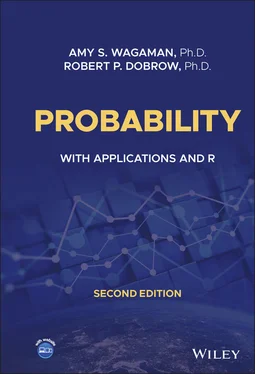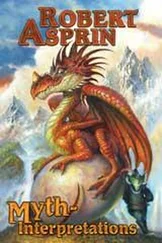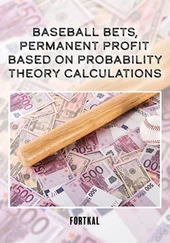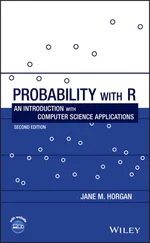Robert P. Dobrow - Probability
Здесь есть возможность читать онлайн «Robert P. Dobrow - Probability» — ознакомительный отрывок электронной книги совершенно бесплатно, а после прочтения отрывка купить полную версию. В некоторых случаях можно слушать аудио, скачать через торрент в формате fb2 и присутствует краткое содержание. Жанр: unrecognised, на английском языке. Описание произведения, (предисловие) а так же отзывы посетителей доступны на портале библиотеки ЛибКат.
- Название:Probability
- Автор:
- Жанр:
- Год:неизвестен
- ISBN:нет данных
- Рейтинг книги:4 / 5. Голосов: 1
-
Избранное:Добавить в избранное
- Отзывы:
-
Ваша оценка:
Probability: краткое содержание, описание и аннотация
Предлагаем к чтению аннотацию, описание, краткое содержание или предисловие (зависит от того, что написал сам автор книги «Probability»). Если вы не нашли необходимую информацию о книге — напишите в комментариях, мы постараемся отыскать её.
distinguished researchers Drs. Robert Dobrow and Amy Wagaman deliver a thorough introduction to the foundations of probability theory. The book includes a host of chapter exercises, examples in R with included code, and well-explained solutions. With new and improved discussions on reproducibility for random numbers and how to set seeds in R, and organizational changes, the new edition will be of use to anyone taking their first probability course within a mathematics, statistics, engineering, or data science program.
New exercises and supplemental materials support more engagement with R, and include new code samples to accompany examples in a variety of chapters and sections that didn’t include them in the first edition.
The new edition also includes for the first time:
A thorough discussion of reproducibility in the context of generating random numbers Revised sections and exercises on conditioning, and a renewed description of specifying PMFs and PDFs Substantial organizational changes to improve the flow of the material Additional descriptions and supplemental examples to the bivariate sections to assist students with a limited understanding of calculus Perfect for upper-level undergraduate students in a first course on probability theory, is also ideal for researchers seeking to learn probability from the ground up or those self-studying probability for the purpose of taking advanced coursework or preparing for actuarial exams.

 possible outcomes. Rolling a die four times gives
possible outcomes. Rolling a die four times gives  possible rolls.
possible rolls. , there are six permutations:
, there are six permutations:
 -element set? There are
-element set? There are  possibilities for the first element of the permutation,
possibilities for the first element of the permutation,  for the second, and so on. The result follows by the multiplication principle.
for the second, and so on. The result follows by the multiplication principle. permutations of an
permutations of an  -element set.
-element set. grows very large very fast. In a classroom of 10 people with 10 chairs, there are
grows very large very fast. In a classroom of 10 people with 10 chairs, there are  3,628,800 ways to seat the students. There are
3,628,800 ways to seat the students. There are  orderings of a standard deck of cards, which is “almost” as big as the number of atoms in the observable universe, which is estimated to be about
orderings of a standard deck of cards, which is “almost” as big as the number of atoms in the observable universe, which is estimated to be about 
 , where
, where  is a constant, are said to exhibit exponential growth. The factorial function
is a constant, are said to exhibit exponential growth. The factorial function  grows like
grows like  , which is sometimes called super-exponential growth.
, which is sometimes called super-exponential growth. is pervasive in discrete probability. A good approximation when
is pervasive in discrete probability. A good approximation when  is large is given by Stirling's approximation
is large is given by Stirling's approximation

 “is asymptotic to” the function
“is asymptotic to” the function 











